
Ciencia e Tecnica Vitivinicola
Scope & Guideline
Advancing the Science of Viticulture and Wine Technology
Introduction
Aims and Scopes
- Viticultural Practices and Innovations:
The journal explores various viticultural techniques, including the application of mycorrhizal fungi, rootstock selection, and the effects of environmental factors on grapevine performance. - Enological Research and Wine Quality:
Research on winemaking processes, including fermentation techniques, aging processes, and the impact of different maturation vessels on wine quality, is a core focus. - Sensory Analysis and Consumer Perception:
The journal emphasizes the importance of sensory evaluation in wine tasting and consumer preferences, offering insights into the methodologies for assessing wine quality and consumer behavior. - Market Dynamics and Economic Aspects:
Studies that investigate the economic aspects of the wine industry, including market failures, consumer behavior, and the economic impact of wine tourism, are regularly featured. - Sustainability and Environmental Impact:
Research on sustainable practices in viticulture, including the use of biostimulants, the impact of climate change, and environmental models applied to wineries, is increasingly prominent.
Trending and Emerging
- Sustainable Viticulture Practices:
There is an increasing emphasis on sustainability, with research exploring environmentally friendly practices, such as the use of biostimulants and the impact of climate change on viticulture. - Consumer Behavior and Wine Tourism:
Research focusing on consumer perceptions, preferences, and the overall experience of wine tourism is on the rise, indicating a growing interest in understanding market dynamics. - Advanced Analytical Techniques:
The application of sophisticated analytical methods, such as RT-PCR for virus detection and advanced spectroscopy techniques, is trending, reflecting a broader interest in precision viticulture. - Impact of Climate Change on Viticulture:
Studies examining the effects of climate variability on grape cultivation and wine quality are increasingly prominent, highlighting the importance of adaptive strategies in the face of climate challenges. - Functional and Health Benefits of Wine Components:
Emerging research on the health benefits of wine constituents, such as antioxidants from grape seeds, is gaining attention, aligning with current consumer trends towards health-conscious products.
Declining or Waning
- Traditional Pest Management Strategies:
Research focused on conventional pest management techniques, such as the use of chemical pesticides, has decreased, possibly due to a growing emphasis on integrated pest management and organic practices. - Basic Viticultural Techniques:
Themes surrounding traditional viticultural methods, such as simple irrigation techniques or standard pruning practices, have seen less attention as researchers increasingly explore innovative and sustainable alternatives. - Generalized Wine Chemistry:
While specific studies on wine chemistry remain relevant, there is a noticeable decline in broad, generalized studies; instead, there is a trend towards more specialized research focusing on particular compounds or interactions.
Similar Journals
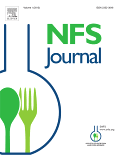
NFS Journal
Unveiling groundbreaking research in Food Science and Nutrition.NFS Journal, published by ELSEVIER, is at the forefront of research in the fields of Food Science and Nutrition and Dietetics, boasting an impressive impact factor that underscores its significance. With an Open Access model since 2015, the journal facilitates widespread dissemination and accessibility of high-quality research, making it a valuable resource for scholars and practitioners alike. Located in Germany, this journal has made its mark with its prestigious Q1 ranking in both Food Science and Nutrition and Dietetics as of 2023, positioning it among the top-tier journals in these disciplines. Additionally, it holds an outstanding standing in Scopus rankings, being placed at 10th out of 140 in Nutrition and Dietetics and at 27th out of 389 in Food Science, reflecting its influence and reach within the global academic community. The NFS Journal is dedicated to publishing the latest advancements and practices that shape our understanding of the relationship between food, health, and nutrition, appealing to researchers, professionals, and students eager to stay updated with novel insights and breakthroughs.

Journal of Food and Nutrition Research
Bridging Research and Real-World Nutrition SolutionsJournal of Food and Nutrition Research, published by the VUP FOOD RESEARCH INST in Bratislava, Slovakia, serves as a vital platform for disseminating cutting-edge research in the fields of food science and nutrition. With an ISSN of 1336-8672 and an E-ISSN of 1338-4260, this journal emphasizes the importance of interdisciplinary approaches to address contemporary challenges related to food quality, dietary practices, and nutritional health. Notably recognized in the 2023 Scopus rankings, the journal is classified in Q3 quartiles for both Food Science and Nutrition & Dietetics, providing a forum for researchers aiming to enhance knowledge and practices within these domains. Those engaged in academia and industry will find the journal invaluable for its comprehensive scope, which covers novel food technologies, nutrition interventions, and the implications of dietary behaviors. Though not open access, the journal is dedicated to enriching the academic conversation and contributing to advancements in public health and nutrition policies.
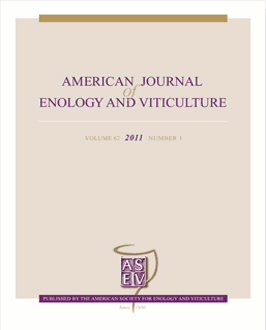
AMERICAN JOURNAL OF ENOLOGY AND VITICULTURE
Fostering Excellence in Enology and Viticulture Scholarship.The American Journal of Enology and Viticulture, published by the American Society of Enology and Viticulture, serves as a pivotal platform for scholarly research in the disciplines of enology and viticulture. With a distinguished ISSN of 0002-9254 and an E-ISSN of 1943-7749, this esteemed journal has been contributing significant insights since its inception in 1973. Currently residing in the prestigious Q2 category for both Food Science and Horticulture, it ranks impressively among its peers, standing at #27 out of 115 in the Horticulture sector and #165 out of 389 in Food Science, reflecting its impact and relevance in agricultural research. The journal offers a wealth of valuable research articles, reviews, and studies that explore the intricacies of grape cultivation and wine production, making it an indispensable resource for researchers, professionals, and students keen on advancing their knowledge in these fields. Although it does not currently operate under an open-access model, the rigorous peer-review process ensures that only high-quality, scientifically sound content is disseminated, promoting innovation and collaboration in the pursuit of excellence in viticulture and enology.
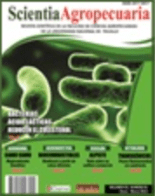
Scientia Agropecuaria
Exploring new frontiers in agricultural sciences from Trujillo, Peru.Scientia Agropecuaria, an esteemed journal published by the Universidad Nacional de Trujillo’s Faculty of Agricultural Sciences, is dedicated to advancing research in the fields of Agronomy, Animal Science, and Soil Science. With a rich heritage since its inception, the journal has embraced Open Access since 2010, ensuring global dissemination of knowledge to researchers and practitioners. Hailing from Trujillo, Peru, it plays a vital role in the scientific community, capturing a Q3 ranking across multiple categories in the 2023 category quartiles, which reflects its growing influence, supported by its commendable Scopus percentile rankings. The scope of the journal is to publish original research, reviews, and insights that address critical issues and innovations in agriculture and related fields, making it a key resource for researchers, professionals, and students aiming to stay abreast of cutting-edge developments. As the journal continues its convergence until 2024, it remains an important platform for impactful contributions to the agricultural sciences.

Applied Food Research
Connecting Knowledge to Global Health and Well-BeingApplied Food Research, published by Elsevier, is an esteemed journal that plays a critical role in advancing the field of Food Science. With an ISSN of 2772-5022, the journal has established itself as a premier outlet for high-quality research, achieving a commendable Q1 ranking in the 2023 Food Science category and a 63rd percentile in Scopus rankings for Agricultural and Biological Sciences. Covering a diverse range of topics from food safety to innovative processing techniques, Applied Food Research seeks to publish pioneering studies that enhance our understanding of food systems and contribute to broader discussions on sustainability and nutrition. As it converges on its fourth year of publication, researchers, professionals, and students alike are encouraged to engage with its content through various open access options, ensuring widespread dissemination of knowledge in a field that is vital to global health and well-being. Operating out of Amsterdam, Netherlands, this journal is poised to be an indispensable resource for anyone dedicated to making significant contributions in the domain of food science.

MITTEILUNGEN KLOSTERNEUBURG
Shaping the Future of Horticulture Through ResearchMITTEILUNGEN KLOSTERNEUBURG is a prestigious journal published by the Höhere Bundeslehranstalt & Bundesamt für Wein- und Obstbau Klosterneuburg in Austria, focusing on the fields of horticulture and agricultural sciences. With an ISSN of 0007-5922, this journal disseminates vital research findings and advancements within the horticultural sector, emphasizing sustainable practices and innovative techniques in wine and fruit cultivation. It has been recognized for its scholarly contributions, achieving a Q3 ranking in horticulture as of 2023, positioning it among the notable resources in its field. While currently not offering open access options, MITTEILUNGEN KLOSTERNEUBURG remains an essential platform for researchers, professionals, and students alike, fostering knowledge exchange and collaborative advancements in horticultural science. The journal's dedication to supporting research from 1989 through 2024 highlights its longstanding commitment to excellence in the industry.
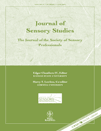
JOURNAL OF SENSORY STUDIES
Pioneering Research in Sensory EvaluationWelcome to the Journal of Sensory Studies, an influential publication dedicated to advancing research in the fields of food science and sensory systems. Published by Wiley, this esteemed journal, with an ISSN of 0887-8250 and E-ISSN of 1745-459X, has been at the forefront of sensory research since its inception in 1986. With a commitment to high-quality scholarship, the journal holds a Q2 ranking in Food Science and a Q4 ranking in Sensory Systems, reflecting its significant impact in these specialized areas. Researchers and professionals will find a wealth of knowledge as the journal disseminates critical insights on sensory perception, food product development, and innovative methodologies in sensory evaluation. The journal does not currently offer open access options, making it crucial for institutions and scholars focused on sensory research to stay connected. As the field evolves, the Journal of Sensory Studies continues to redefine standards and forge pathways for future inquiry through its engaging articles, fostering a deeper understanding of sensory experiences and their implications.

Carpathian Journal of Food Science and Technology
Advancing Food Science Innovation in the CarpathiansCarpathian Journal of Food Science and Technology, a distinguished publication from the NORTH UNIV CENTER BAIA MARE, has been a pivotal platform for disseminating groundbreaking research in the field of food science since its inception in 2009. With an ISSN of 2066-6845 and an E-ISSN of 2344-5459, this Open Access journal aims to promote knowledge and innovation, offering unrestricted access to its content, thereby enhancing visibility for authors and facilitating a wider readership. Based in Romania, the journal plays a crucial role in advancing scientific inquiry within the agricultural and biological sciences, particularly focusing on contemporary food science issues. As it continues its convergence through 2024, the journal currently holds a Q4 ranking in the Food Science category, allowing it to carve out a unique niche within the academic community despite its current Scopus percentile ranking of 19th. Scholars, researchers, and students in the field will find the journal an invaluable resource for the latest advancements and discussions, making it an essential addition to their academic pursuits.
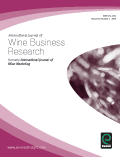
International Journal of Wine Business Research
Uncorking New Trends in Wine Management and MarketingThe International Journal of Wine Business Research, published by Emerald Group Publishing Ltd, is a pivotal resource for scholars and practitioners in the dynamic field of wine business management. Established in 2007, this journal has emerged as a significant platform for disseminating innovative research and insights concerning the wine industry, and is indexed under Scopus with a commendable ranking of #72 out of 218 in the General Business, Management, and Accounting category, achieving a percentile ranking of 67th. With a 2023 Q2 category rank in the Business, Management and Accounting (miscellaneous) sector, the journal is recognized for its valuable contributions to understanding the complexities of wine production, marketing, and consumption. Although it is not an Open Access journal, it offers a wealth of knowledge geared toward enhancing the understanding of both the academic community and industry professionals. By bridging theory and practice, the International Journal of Wine Business Research aims to foster a comprehensive dialogue around emerging trends, sustainability issues, and the socio-economic impacts of the wine business globally.
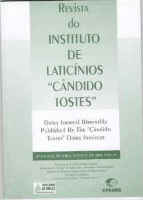
Journal of Candido Tostes Dairy Institute
Advancing Dairy Science for a Sustainable FutureJournal of Candido Tostes Dairy Institute, published by the prestigious INST LATICINIOS CANDIDO TOSTES, has established itself as a vital resource in the field of dairy science and technology. This Open Access journal, operating since 2008, provides an inclusive platform for researchers, professionals, and students to share groundbreaking findings and innovative practices related to dairy production, processing, and quality. Located in Brazil, this journal aims to advance knowledge and standards within the dairy industry, ensuring global access to high-quality, peer-reviewed research. The journal not only contributes to the scientific community but also supports practical advancements that benefit dairy producers and consumers globally. By fostering collaboration among scholars and practitioners, the Journal of Candido Tostes Dairy Institute plays a crucial role in shaping the future of dairy sciences. We encourage contributions that explore novel aspects of dairy research, thereby bridging theoretical insights with industry applications.